V-F-X Ljubljana, 7 – 9 July 2021
Venue: Slovenian Cinematheque, Miklošičeva 28, Ljubljana
Luka Prinčič: trans.fail
Duration: 45′
Free tickets
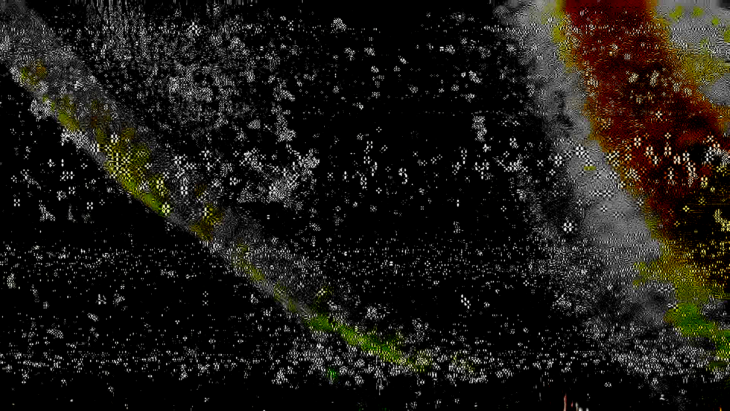
This hybrid AV solo performance utilises pre-recorded and real-time live audio-visual elements and texts to create a frantic and chaotic mesh of data, images and noise. It sources data from various media channels and transfigures them: online videos, home-made software, sonic explorations and visual algorithms, hacks, glitchings and a number of thematic focuses, such as the Slavic-Romani mythical futurism, gender fluidity, imperialism, media theories, praxis and the artistic critique of digital capitalism. The performance premiered online; this is the first time that it will be performed before a live audience.
Luka Prinčič is a musician, performer and intermedia artist, who has worked in the field of computer and electronic music, sound art, intermedia installations and performance art for years, focusing on diverse approaches to creative processes and their manifestation in artistic events and works.
Production: Emanat
sixpackfilm Presents: Body Games
Curated by: Dietmar Schwärzler
Duration: 73′
Tickets: 4 €
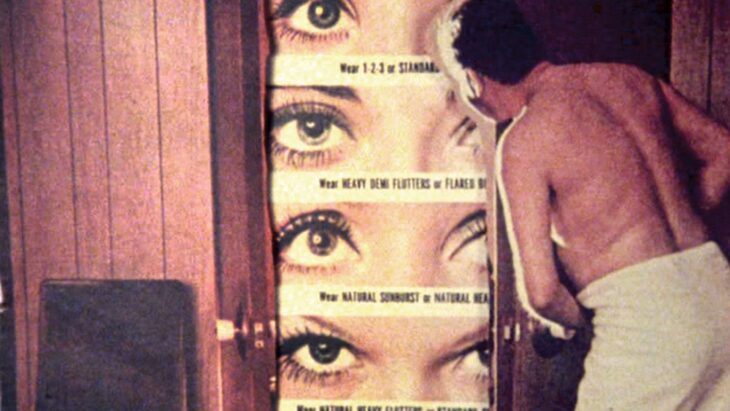
Art & Revolution was the name of the action that ended up becoming one of the most famous happenings of the Austrian post-war period. Günter Brus, Otto Mühl and Peter Weibel were summoned to court. Otmar Bauer was also present that day. His famous action known as Vomit-Action remains one of the most radical works of Viennese Actionism. Birth of Venus by Moucle Blackout is more relaxed, but no less offensive. Stiffness 1-3/7 is a long-term serial conceptual project about masturbation. Mara Mattuschka is one of the most outstanding representatives of Austrian avant-garde filmmaking. Her films are well-known for their extreme high- and low-angle shots and shifts in perspective with which she modulates the appearance of the filmed bodies and faces. In Couples, Maria Lassnig combines animation techniques and real image to depict bodies that do not always wish to fit into one another. Cmelka, in turn, rubs cream on her body, affected by neurodermatitis, in a film in which the artist’s very skin fuses with the skin of the film strip. In Prince of Peace, against the backdrop of tolling church bells and a staccato editing, Hans Scheugl’s camera follows several men as they enter a public toilet that, at the time, was a well-known gay cruising place. For Ashley Hans Scheirl, super 8 has been one of their favourite artistic tools since the very beginning of their filmmaking career; the films they made in collaboration with Ursula Pürrer show a strong commitment to the queercore and punk movements. This hedonistic subculture is particularly present in Summer of 1995, which captures the drag king fever that was raging in London at the time.
The programme will be introduced by Jonida Laçi.
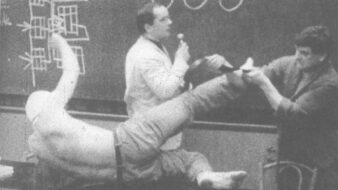
Ernst Schmidt jr., Austria, 1968, 16 mm, 1.33, 2′, 2′, silent
______________
Actions by Günter Brus, Otto Muehl, Peter Weibel, Franz Kaltenböck, Otmar Bauer, Herbert Stumpfl, Anastas, Oswald Wiener, and an unidentified masochist. Experimental documentary film about one of the most famous happenings by the Viennese Actionists, which includes real footage from the event. Having scandalized the Austrian society and government, the happening led to multiple attacks by the press and ended up with Otto Muehl and Günter Brus summoned to court. Oswald Wiener was forced to flee the country.
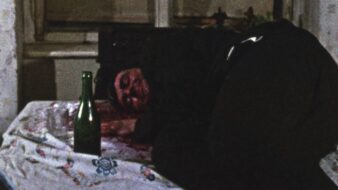
Otmar Bauer, Austria, 1969, digital (shot on 16 mm), 7′, silent
______________
One of the most radical works of Viennese Actionism –a performance during which Bauer drinks, vomits, eats, urinates, and wallows in his own effluents, without showing the slightest consideration for himself or the audience.
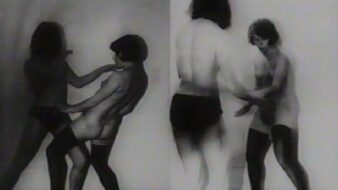
Moucle Blackout, Austria, 1970–1972, 35 mm, 1.37, 5′
______________
To three songs by The Beatles and in free association with the eponymous Botticelli figure, Blackout combines symmetric cuts of pigs (using a mirror effect) with portraits of different people and pictures of dancing women.
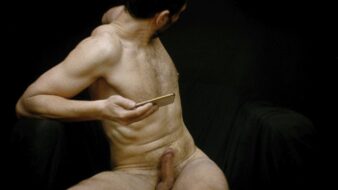
Albert Sackl, Austria, 2018, 35 mm, 1.37, 9′, silent
______________
A serial conceptual long-term project about masturbation. Every ten years, Sackl sits in front of his 16mm camera and tries to keep an erection for around four hours. The resulting footage is then compressed into a 3-minute film through time lapse and single image recording. To this date, 3 of the 7 episodes that Sackl plans to create have been completed. The project, which may, at first glance, look banal and chauvinistic turns out to be a humorous self-deconstruction that incidentally happens to offer an overview of the history of pornography through the lens of its reception by the viewers.
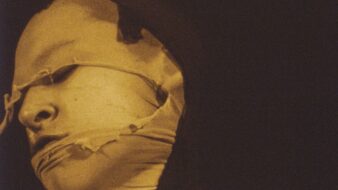
Mara Mattuschka, Austria, 1985, 16 mm, 1.33, 4′
______________
Mara Mattuschka is one of the most outstanding representatives of Austrian avant-garde filmmaking who had already caused a stir with her alter ego Mimi Minus. “In Navel Fable she subjects herself to a second birth through endless pairs of tights. Her body struggles so hard and in such a deformed manner from out of the layers of nylon that the sheer struggle for survival becomes visible.” – Peter Tscherkassky
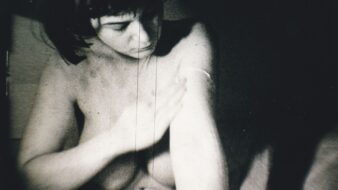
Kerstin Cmelka, Austria, Germany, 1998, 16 mm, 1.37, 3′, silent
______________
Cmelka rubs cream on her body affected by neurodermatitis in a film in which the artist’s very skin fuses with the skin of the film strip.
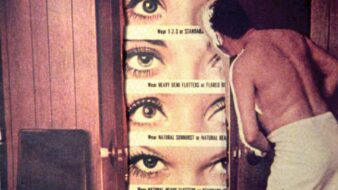
Maria Lassnig, Austria, USA, 1972, 16 mm, 1.37, 10′
______________
Lassnig combines animation techniques and real image to depict bodies that don’t always wish to fit into one another. This footage is paired with short and repetitive but hilarious episodes that portray a failing love affair.

Ursula Pürrer, Ashley Hans Scheirl, Austria, 1985, digital (shot on 16 mm), 1.37, 2′
______________
The film radiates an incredible freshness of intimacy and vitality. The filmmakers characterised the series of films that Super-8 Girl Games belong to as “home movies”.
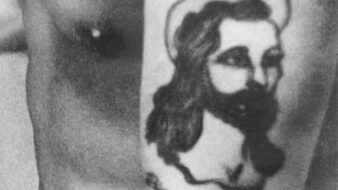
Hans Scheugl, Austria, 1993, 16 mm, 1.37, 6′
______________
With a backdrop of tolling church bells and a staccato editing, Hans Scheugl’s camera follows several men as they enter a public toilet that was, at the time, a well-known cruising place for gay men. The footage is intermingled with inserts of fragmented pictures from a porn magazine in which the portrayed model wears a Jesus tattoo on his upper arm. The film is dedicated to a friend who – as the year of production suggests – died of AIDS.
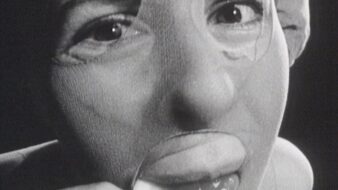
Mara Mattuschka, Germany, Austria, 1993, 16 mm, 1.33, 10′
______________
The world as a playground for a giantess from outer space. A Godzilla imitation on the way to herself: the giantess from outer space in the streets of a big city, fooling around, producing destruction, copulating with the Eiffel Tower.
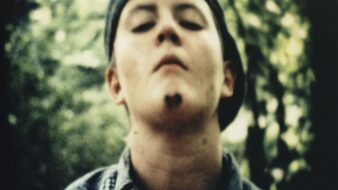
Jason Elvis Parker, Ashley Hans Scheirl, Austria, 1995, 16 mm, 1.33, 13′
______________
For Ashley Hans Scheirl, whose works with Jakob Lena Knebl have been selected to be featured at the Austrian Pavilion for the Venice Biennale 2021, super 8 has been one of his favorite artistic tools since the very beginning of his filmmaking career. The films he made in collaboration with Ursula Pürrer in the 80s show a strong commitment with the queercore and punk movements. His work materializes positive sexual energies that denounce the bourgeois judgmental and moralist perspectives while celebrating sexual pluralism.
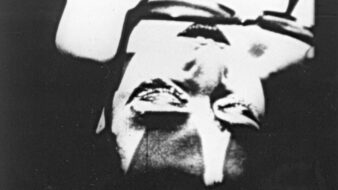
Mara Mattuschka, Austria, 1987, 16 mm, 1.33, 2′
______________
A nude Mimi Minus engages in autoerotic activity while the camera distances itself, in leaps and bounds, to the point that Mimi´s white figure is tiny and eventually disappears in a glaring, high-contrast mountain landscape.
sixpackfilm was founded in 1990 as a non-profit organisation. The task undertaken by sixpackfilm is to secure an audience for Austrian film and video art, both inside Austria and abroad. Their current catalogue encompasses over 1,900 titles, including the historical classics of the Austrian film avant-garde.
Thanks to Austrian Cultural Forum Ljubljana for help in organising the programme.
Round Table: Space and Time to Experiment
Duration: 90’
Free tickets
In English
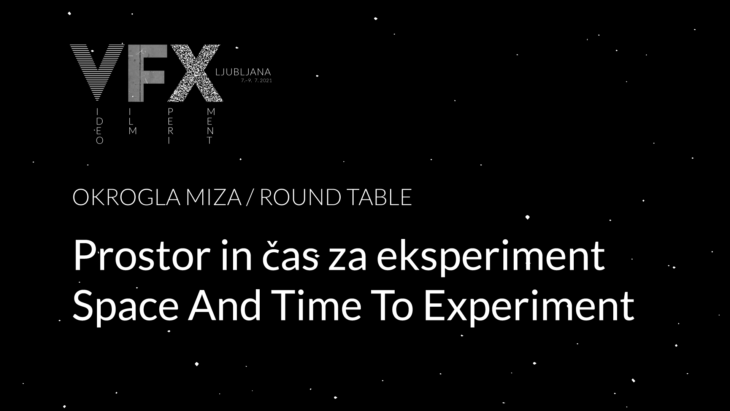
At the round table discussion, we will talk about the circumstances in which experimental film and video works are forged, made and shown. The participants will present their experiences, thoughts and initiatives. The discussion between Anže Peršin (Stenar Projects, Lisbon), Greg de Cuir Jr. (Alternative Film/Video, Belgrade) and Sašo Sedlaček (Academy of Fine Arts and Design, Ljubljana) will be moderated by Varja Močnik (Slovenian Cinematheque).
Curated Programme Stenar Projects: A Support Structure Through Its Catalogue
Curated by: Anže Peršin
Duration: 65′
Tickets: 4 €
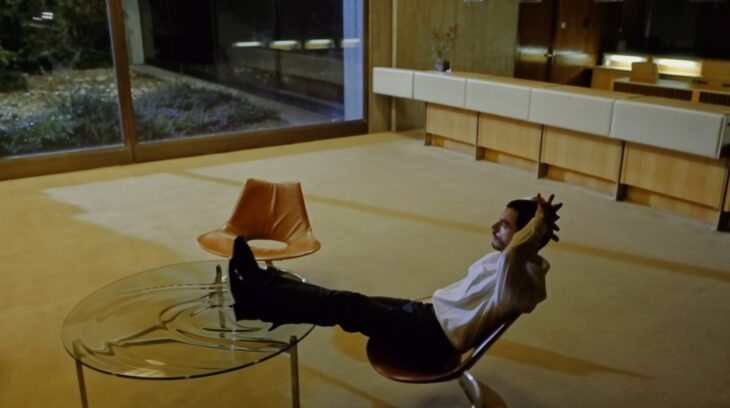
An Emotional Sherpa by the Norwegian artist Trygve Luktvasslimo was Stenar Projects’ first production and is the first film in this curated programme, an examination of a support structure and its catalogue. Sunstone by Filipa Cesar and Louis Henderson was the first project that Stenar Projects received film funding for. Contemporary art funding often does not cover the total cost of a moving-image project, so access to the majority of film funds requires festival distribution. That is why, in addition to funding and production, Stenar Projects also took up festival distribution. The third film in the programme is I gave my love a cherry that had no stone by the British artist Emily Wardill. Emily defines her piece as a sculpture. It is usually installed on a big heavily tilted screen and runs as a loop. This is the first time she has apprehensively agreed to show it in a cinema. It is on this point of discomfort and ambition between how we exhibit, how we produce and how we finance that Stenar has been meeting its artists for the last six years.
The programme will be introduced by Anže Peršin.
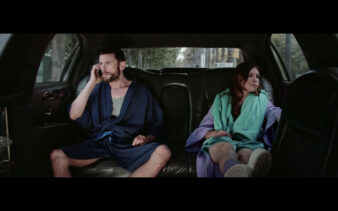
Trygve Luktvasslimo, Norway, Portugal, 2015, DCP, 2.35, 22’
______________
The film tracks Fresnel lenses from their site of production to their exhibition in a museum of lighthouses and navigational devices. It also examines the diverse social contexts in which optics are implicated, contrasting the system of triangular trade that followed the first European arrivals in the ‘New World’ with the political potential seen in Op art in post-revolutionary Cuba. Incorporating 16mm celluloid images, digital desktop captures and 3D CGI, the film also maps a technological trajectory: from historical methods of optical navigation to new algorithms of locating, from singular projection to multi-perspective satellite visions.
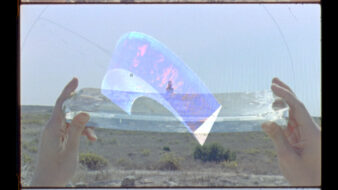
Filipa César, Louis Henderson, Portugal, 2018, DCP (shot on 16 mm), 16:9, 34’
______________
The film tracks Fresnel lenses from their site of production to their exhibition in a museum of lighthouses and navigational devices. It also examines the diverse social contexts in which optics are implicated, contrasting the system of triangular trade that followed the first European arrivals in the ‘New World’ with the political potential seen in Op art in post-revolutionary Cuba. Incorporating 16mm celluloid images, digital desktop captures and 3D CGI, the film also maps a technological trajectory: from historical methods of optical navigation to new algorithms of locating, from singular projection to multi-perspective satellite visions.
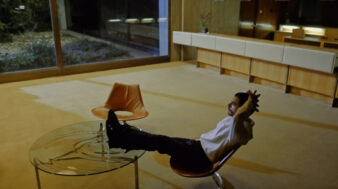
Emily Wardill, Portugal, 2016, DCP, 16:9, 9’
______________
Holding in her mind Dorothea Tanning’s painting Some Roses and their Phantoms (1952) and its sickening presentation of objects as between states of being, Wardill made a film that also hovers between definitions. The architecture of the Gulbenkian auditorium in Lisbon, its colours and sense of being lost in time accompany us through a loop where a man wanders the building at night, followed by something that is not human. Through the care and paranoia with which she approaches the digital image, the artist investigates the haunting of the present by the past and the remnants of textures longing to be touched.
Stenar Projects is a production platform that focuses on the artists’ moving image and supports novel film practices through development, funding, production and distribution. Ranging between various genres and formats, its projects include an experimental feature documentary, a speculative short film, a digital animation and a micro-film, among others. Working closely with its collaborating artists, Stenar Projects has been producing new works for major art institutions and exhibiting films at international film festivals.
Anže Peršin has 18 years of experience in film. He had worked on commercial film production throughout Southern Europe, the Middle East and North Africa, and owned a commercial production company in Lisbon. Since 2015, he has been developing Stenar Projects, a production platform for the artists’ moving image, based in Portugal. Anže is a member of Associação de Produtores de Cinema e Audiovisual in Portugal and a 2019 Sundance Institute Documentary Film Program Grantee.
Selection from the DIVA Station Archive: An Escape into Experiment
Curated by: Peter Cerovšek, Vesna Bukovec
Duration: 57′
Tickets: 4 €
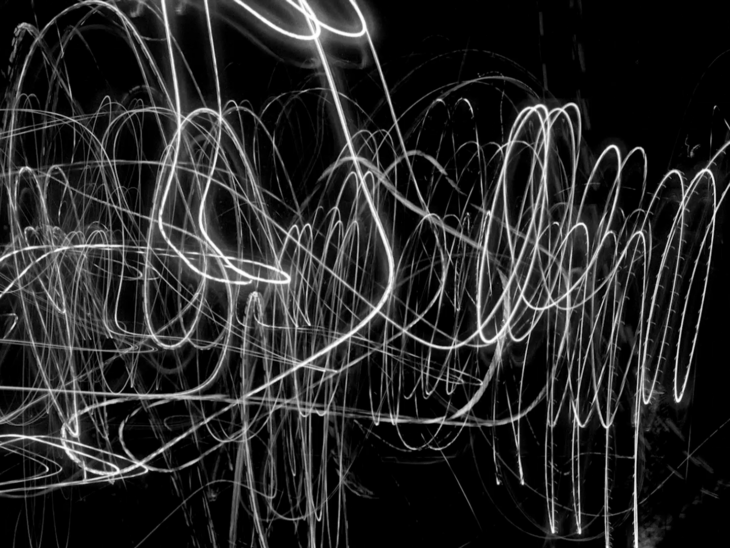
From a TV signal to video, from film stock to computer generated images. Te selection of works from the DIVA Station archive is a collage of different aesthetic and substantive approaches that reflect the time of their making and the technical limitations of a particular medium. All works share the creation of their own interspace of interpretation within the classically defined bearers of messages (words, images, sound, music…).
The programme will be presented by Peter Cerovšek and Vesna Bukovec.
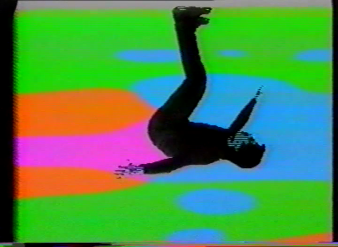
Miha Vipotnik, Slovenia (Yu), 1986, digital (shot on U-matic), 4:3, 1’ 52”
» video
______________
In this video, Vipotnik makes an ironic statement about the state of Slovenian video production at the time and its (non-)inclusion in the TV programme. At first, the artist is sitting in a studio like a TV presenter, but then his statement continues as a voice-over accompanying a montage of segments from his older black-and-white video entitled Space, which were subjected to chroma keying. The video was broadcast as part of Avtovizija (1986), the first programme on auteur video on RTV Ljubljana.
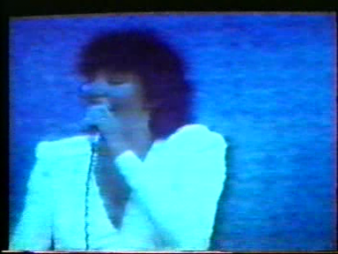
Zemira Alajbegović, Slovenia (Yu), 1983, 4:3, digital (shot on VHS), 4’ 24”
» video
______________
A collage of the manifestations of socialist victories and funerals, melodramatic films and family TV shows accompanied by the singing of Tereza Kesovija, the star of Yugoslav pop culture. A society ruled by old men and socialist populism; public and intimate life intertwine, connected in a dull and stuffy rhythm of passing time.
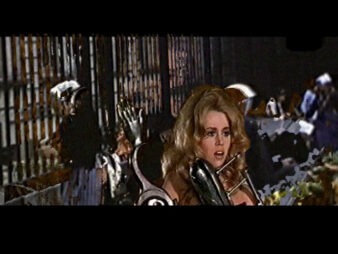
Gorazd Krnc, Slovenia, 2007, digital, 4:3, 3’ 11”
» video
______________
The video collage is accompanied by the narration and dialogues borrowed from Barbarella (Roger Vadim, 1968). Using a green screen, the scenes cut out from the film are applied to the background composed of collaged shots covered by various filters during the editing. With this process, the film’s galactic content is transferred into the real world and the metaphor of three doors on which Barbarella is based obtains a realer context.
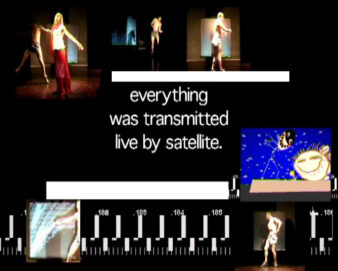
Neven Korda, Slovenia, 2007, digital, 4:3, 8’ 50”
» video
______________
The visualised and dubbed biography of Neven Korda is composed of a number of films from the New New Films (NNF) series. The film begins with the entire Gagarin and the narrator of 1 Sec of My Life. The sound and picture of Reincarnation on Taxidermist Monitor, Angelic Wreath on Speed and Angelic Wreath on Ocean are mixed. The artist characterised the work as a post (re-)use of finished works in the mode of editing on a timeline.
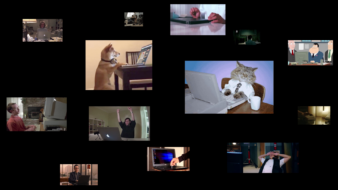
Sara Bezovšek, Slovenia, 2019, HD, 2’
» video
______________
The video is a collage of clips from all 13 videos that were presented on their own media at Computering, an exhibition at Kino Šiška’s gallery. In the mash-up video technique, which has spread extensively with the phenomenon of mass image sharing on the internet, it focuses on the shots that include a computer. In addition to the experience of contemporary visual culture, the work also offers the starting points for the questioning of the role of the author and cultural appropriation in the contemporary world.
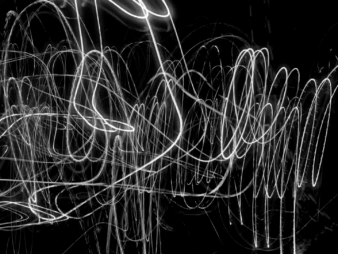
Kristina Kokalj, Slovenia, 2018, digital, 4:3, 4’ 25”
» video
______________
The video is a collage of black-and-white images shot on 35mm analogue film. The images follow one another at a rapid pace and, according to the principle of stop-motion animation, create the illusion of flickering and hectic movement. The images of nature (treetops, branches) and urban landscape (street lights, graffiti, fences, roads) are intertwined. Open aperture shots produce a branch-like linear light drawing that transitions and flashes alternately with close-ups of bare branches. The stroboscopic flashes of images are accompanied by Klemen Tehovnik’s original music and emphasise temporariness, fragmentation and anxiety.
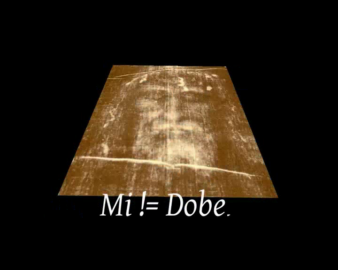
Borut Savski, Slovenia, 2007, 4:3, 4’ 23”
» video
______________
Videographics are modern experimental narratives in which the image acts as a sound marker. Images are abstract and the connection between video and audio is direct, even though it does not follow any logic. A video graphics is a materialisation of an audio signal and an integral part of the experimental context.
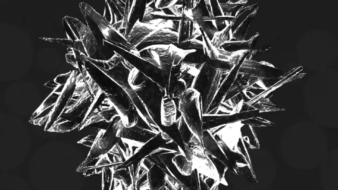
Uršula Berlot, Sunčana Kuljiš Gaillot, Slovenia, 2017, HD, 5’ 6”
» video
______________
This digital animation is based on the idea of simulating life at the molecular level. It shows a round shape in the process of constant transformation. A structure that alternately resembles the composition of viruses, complex proteins and carbon fullerenes is being decomposed, transformed and re-shaped in a string of ordering processes. The soundtrack was made by Scanner (Robin Rimbaud).
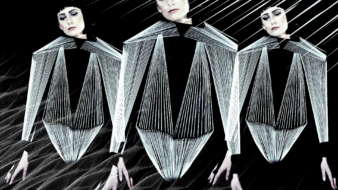
Agnes Momirski, Slovenia, 2017, HD, 3’ 33”
» video
______________
A music video for Sontag Shogun no.4 (Sonar) from the Patterns For Resonant Space LP. In collaboration with Brencha (Brina Vidic – costume design).
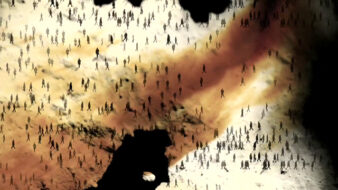
Nataša Prosenc Stearns, USA, 2017, HD, 7’ 31”
» video
______________
A series of three single-channel videos: Humans Crossing, Deafening Whispers/Alternative Facts, Nucleus Brass. The world is being ruined by overpopulation, the deafening processes of destruction and people’s outrageous audacity.
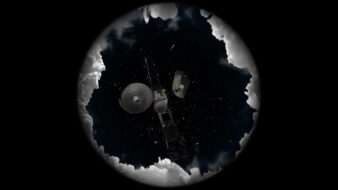
Sašo Sedlaček, Slovenia, 2016, HD, 3’ 40”
______________
This dystopian visual illusion that alludes to the tradition of Renaissance ceiling painting opens a window into the nearby cosmos, where, in the blackness of the orbits along which satellites circle the Earth, there is far more space trash than satellites. Despite its vastness, the universe is not so unlimited that humans could simply continue spreading their bad earthly habits out into space without any ecological consequences. The 3D animation was made with the open source software Blender. The video installation was presented at the 8th Triennial of Contemporary Art – U3, at the Museum of Modern Art Ljubljana.
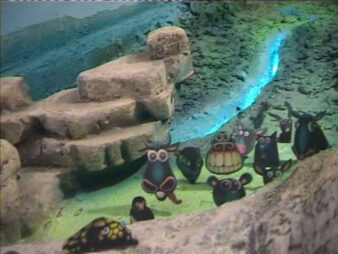
Damjan Kracina, Vladimir Leben, Slovenia, 2005, 4:3, 5’ 39”
» video
______________
The video was created for a joint eponymous exhibition project by both artists. The close-ups of an installation of the Galapagos Islands with a volcano are followed by motifs of individual animal species from the paintings of Vladimir Leben. The video includes a clip from the video Ape Boys, which is followed by shots of the sculptures and drawings of fictitious animal species created by Damijan Kracina. The artists share an examination of issues related to animals, their rights and characteristics, and a good sense of humour and the absurd.
Postaja DIVA is a online and physical archive that the Centre for Contemporary Arts SCCA-Ljubljana has been developing since 2005 in order to research, document, archive and present art films, videos and new media art.
deskt0p_cinema
Compiled by: Greg de Cuir Jr.
Duration: 70′
Free tickets
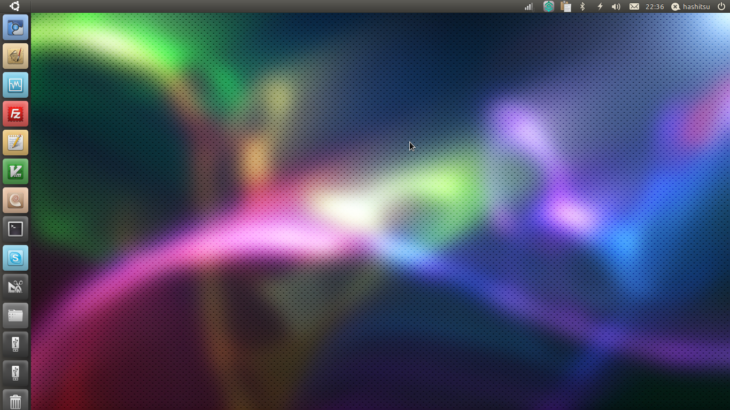
This programme takes the form of a projector performance or, better yet, an interface performance, in which the platform is both an artistic tool and a canvas: the desktop display. The desktop as material, as editing suite, as camera, as projection mechanism – as perhaps the most consequential surface that touches countless people every day across the globe. Practiced by visual artists to challenge conventional forms of expression, used by academics to present and perform new modes of research, by film critics to engage with their objects of contemplation, and by legions of nonprofessionals who distribute all types of user-generated content online. Desktop cinema deletes divisions of high and low, commercial and non, film and video. It is the lingua franca of the 21st century. This projection performance will take a short journey through the various aesthetic and technological contours of the art of the desktop.
Programme will be performed by Greg de Cuir Jr.
Greg de Cuir Jr. is the selector of the Alternative Film/Video festival in Belgrade. As an independent curator, he has prepared several video and film programmes at various international institutions. He is the editor-in-chief of NECSUS: European Journal of Media Studies and the book series Eastern European Screen Cultures. He writes specialist texts for magazines and publications. He obtained his PhD from the Faculty of Dramatic Arts, University of Arts in Belgrade.
Retrospective: Ema Kugler
Curated by: Varja Močnik, Igor Prassel
Duration: 70’
Tickets: 4 €
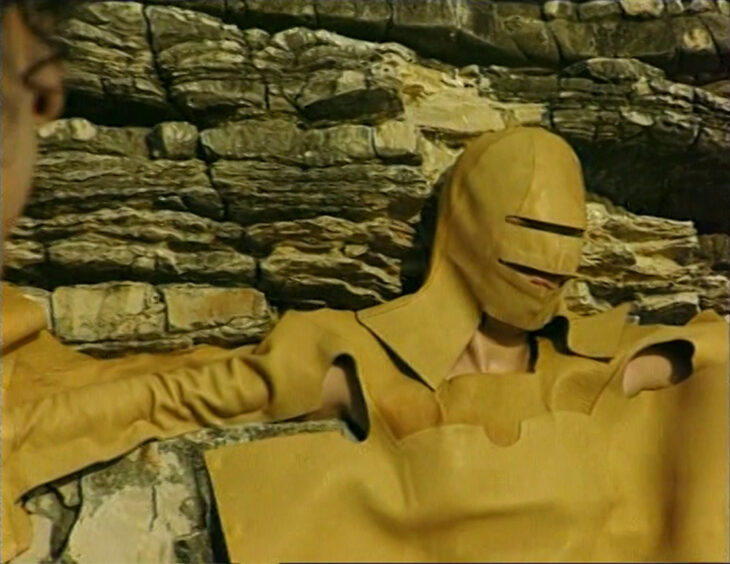
People made of flesh and blood are captured in the mythic matrices of civilisation or the stifling laws of society that they themselves write. The tight (but also astonishing and practically palpable) frameworks can be transcended only by experiment that equals progress and destruction that creates a space for something new.
This programme is the beginning of the retrospective of Ema Kugler’s films, which will take place in autumn at the Slovenian Cinematheque.
The programme will be presented by Ema Kugler.
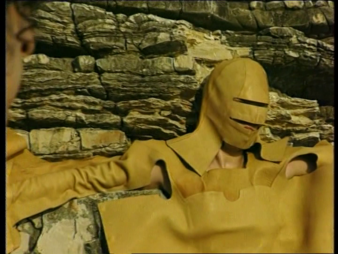
Ema Kugler, Slovenia, 1995, DCP (shot on Beta SP – digital mastering), 4:3, 27’
» video
______________
The artist insists on the duality of human nature: the same dreadfulness is part of both the mythical and the real world. The duality is explicitly presented by means of electronic effects that can petrify a human face, or wall-up a human body in a few seconds. Human figures dressed in extravagant costumes are returned back to nature by means of electronic effects: a man in a costume reminiscent of a bird transforms into a real bird. The costumed and real birds are accentuated by the bird’s eye view, which always emphasises man’s smallness and forlornness in his own world and within nature.
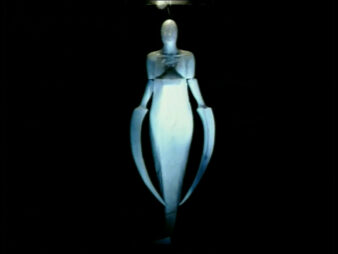
Ema Kugler, Slovenia, 1996, DCP (shot on Beta SP – digital mastering), 4:3, 8’
» video
______________
Video Taiga is made after eponymous performance carried out at the international festival of contemporary arts City of women in October 1995 in Ljubljana. Taiga is a dark video landscape with human figures in menacing costumes, but it also includes two almost naked fighters and a drowning woman. Wax dogs add to the coldness of the video taiga; they actually melt away, while the electronic effect only serves to accelerate the process. The essence of taiga is the act of destruction, or transition. The destruction of art form creates a new, entirely different pattern. The transition becomes an event with a message. Sculptures are the landmarks of the beginning and of the end.
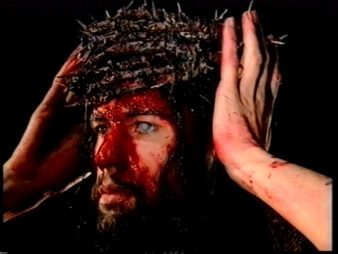
Ema Kugler, Slovenia, 1999, DCP (shot on Beta SP – digital mastering), 4:3, 35’
» video
______________
Urbanity is finally erased with mythological rituals, which is defined by the title of the video film: menhir, a large upright standing stone from the Neolithic Period which was used in sacred rituals. A man and a woman are Adam and Eve who are formed before us with electronic transformation (morphing) and are marked by blood, which also marks all the other elements of the video image: murder of an individual committed by a menhir or the trinity (politics, church, army), bodies of dancers. Blood, murder and death are only beaten by the second basic element: stone which is in the next moment drenched in blood. Electronic tricks, which turn rulers from flesh and blood into stone and vice versa, also act in the battle between natural elements.
Ema Kugler is a film director, producer and multidisciplinary artist with a distinctly unique authorial poetics. Since the 1990s, she has created a series of performances, films, installations and auteur videos that are a product of complex narratives, perfected scripts and original costume and set designs. She has received numerous Slovenian and international awards and prizes.
Festival Programme Team: Peter Cerovšek, Vesna Bukovec, Varja Močnik, Igor Prassel
Visual Identity: Vesna Bukovec
Slovene proofreading: Mojca Hudolin
English Translation: Maja Lovrenov
Production: SCCA-Ljubljana/Postaja DIVA in Slovenska kinoteka
Support: City of Ljubljana – Department of Culture, Ministry of Public Administration, Austrian Cultural Forum Ljubljana, Slamič
![]()
![]()
![]()
![]()
![]()
![]()
![]()

